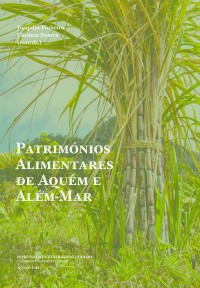Please use this identifier to cite or link to this item:
https://hdl.handle.net/10316.2/39646| DC Field | Value | Language |
|---|---|---|
| dc.contributor.author | Pinheiro, Cristina | |
| dc.date.accessioned | 2016-10-12T09:32:13Z | |
| dc.date.accessioned | 2020-09-08T16:58:14Z | - |
| dc.date.available | 2016-10-12T09:32:13Z | |
| dc.date.available | 2020-09-08T16:58:14Z | - |
| dc.date.issued | 2016 | - |
| dc.identifier.isbn | 978-989-26-1190-7 | |
| dc.identifier.isbn | 978-989-26-1191-4 (PDF) | |
| dc.identifier.uri | https://hdl.handle.net/10316.2/39646 | - |
| dc.description.abstract | Pliny considered breast milk one of the most beneficial medicinal substances, a much praised ingredient in all treatises about materia medica due to its healing qualities. Still, the medical texts about female nature and diseases weave a series of considerations about the qualities of breast milk, especially in the first weeks after birth, and question the advantages for the newborn being breastfed by the mother. Taking this reflection as a basis, we assess the importance granted to breastfeeding in Roman society, where hiring wetnurses seems to have been a common practice. We analyse texts that provide information about how to feed a newborn and how wetnurses should live, in order to perceive the cultural construction of motherhood and the expected nature of the relationship between the mother and her children. | eng |
| dc.description.abstract | Considerado por Plínio uma das substâncias medicinais mais benéficas, o leite materno é ingrediente louvado em todos os tratados de matéria médica pelas suas qualidades curativas. Ainda assim, os textos médicos sobre a condição e as doenças femininas desenvolvem um conjunto de reflexões acerca das qualidades do leite materno, em especial nas primeiras semanas após o parto, que questionam as vantagens de o recém-nascido ser amamentado pela mãe. Tomando esta reflexão como base, avaliamos que importância se concedia à amamentação materna numa sociedade como a romana, em que a contratação de amas-de-leite parece ter sido comum. Procuramos na análise dos textos acerca da alimentação do recém-nascido e do regime de vida das amas-de-leite traços da construção cultural da maternidade e da natureza da relação entre a mãe e os seus filhos. | por |
| dc.language.iso | por | - |
| dc.publisher | Imprensa da Universidade de Coimbra | por |
| dc.publisher | Annablume | por |
| dc.relation.ispartof | http://hdl.handle.net/10316.2/39609 | por |
| dc.rights | open access | - |
| dc.subject | Children/Childhood/Newborn in Greece and Rome | eng |
| dc.subject | ancient medicine | eng |
| dc.subject | breastfeeding | eng |
| dc.subject | motherhood | eng |
| dc.subject | Soranus of Ephesus | eng |
| dc.subject | Infância na Antiguidade Clássica; | por |
| dc.subject | medicina antiga | por |
| dc.subject | amamentação | por |
| dc.subject | maternidade | por |
| dc.subject | Sorano de Éfeso | por |
| dc.title | «Dulcissimum (…) mollissimumque et (…) utilissimum (Plin. Nat. 28.72): considerações sobre o leite materno | por |
| dc.title.alternative | «Dulcissimum (…) mollissimumque et (…) utilissimum (Plin. Nat. 28.72): notes on breast milk and breastfeeding in ancient medical texts.» | eng |
| dc.type | bookPart | por |
| uc.publication.collection | DIAITA: Scripta & Realia | por |
| uc.publication.firstPage | 371 | - |
| uc.publication.lastPage | 383 | - |
| uc.publication.location | Coimbra | por |
| dc.identifier.doi | 10.14195/978-989-26-1191-4_17 | - |
| uc.publication.digCollection | PB | por |
| uc.publication.orderno | 17 | - |
| uc.publication.area | Artes e Humanidades | por |
| uc.publication.bookTitle | Patrimónios alimentares de aquém e além-mar | - |
| uc.publication.manifest | https://dl.uc.pt/json/iiif/10316.2/39646/205728/manifest?manifest=/json/iiif/10316.2/39646/205728/manifest | - |
| uc.publication.thumbnail | https://dl.uc.pt/retrieve/11086947 | - |
| uc.publication.parentItemId | 54693 | - |
| uc.itemId | 69157 | - |
| item.fulltext | With Fulltext | - |
| item.grantfulltext | open | - |
| Appears in Collections: | Patrimónios alimentares de aquém e além-mar | |
Files in This Item:
| File | Description | Size | Format | |
|---|---|---|---|---|
| dulcissimum.pdf | 5.73 MB | Adobe PDF |  |
Items in DSpace are protected by copyright, with all rights reserved, unless otherwise indicated.
